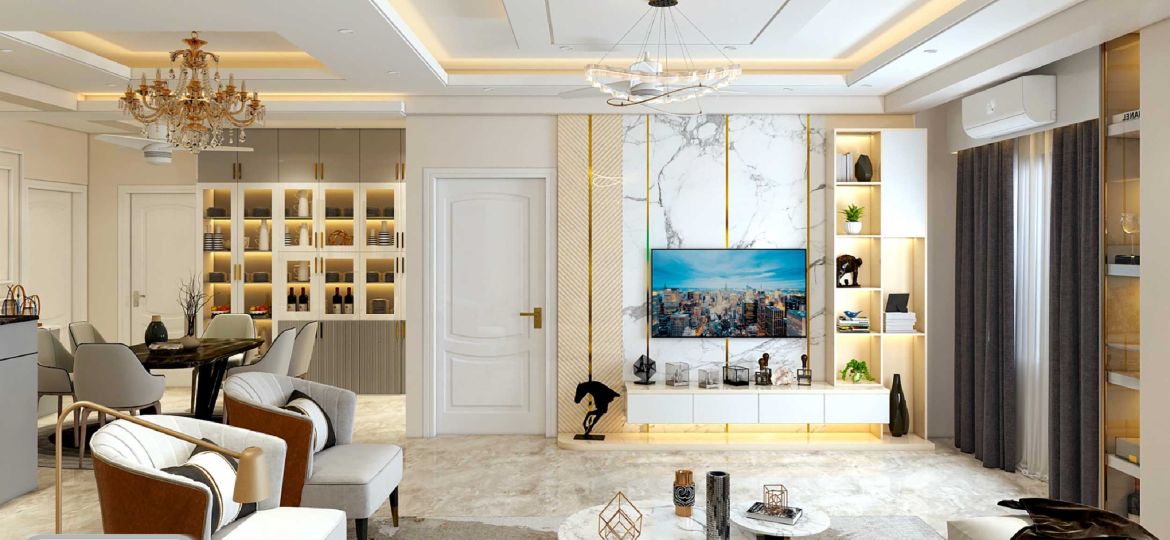
Differentiating Family Living Rooms and Formal Living Rooms
Living rooms are the heart of a home, yet they can serve distinctly different purposes depending on the type. The family living room and the formal living room each have unique characteristics, layouts, and functionalities. Understanding their differences can help you design spaces that meet your lifestyle needs and aesthetic preferences.
Family Living Room
Purpose
The family living room is the hub of daily activities—a space designed for relaxation, entertainment, and bonding. It’s where you’ll find the family gathering to watch TV, play games, or simply enjoy each other’s company.
Key Features
Casual and Comfortable: Prioritizes comfort with plush seating, soft rugs, and functional furniture.
Multifunctional: Often doubles as a play area for kids or a casual workspace.
Tech-Friendly: Incorporates entertainment systems, charging stations, and smart lighting.
Durable Materials: Features stain-resistant fabrics and durable furniture to withstand wear and tear.
Storage Solutions: Includes shelves, cabinets, or baskets to organize toys, books, and other everyday items.

Interior Design Ideas
Seating: Opt for a large sectional sofa or recliners with soft throws and cushions.
Color Palette: Use warm and inviting colors like earthy tones, beige, or soft pastels.
Lighting: Install dimmable lighting and include floor or table lamps for a cozy atmosphere.
Décor: Add family photos, artwork, or personalized items to reflect your family’s personality.
Entertainment: Create a media wall with a TV, sound system, and hidden cable management.
Formal Living Room
Purpose
The formal living room is designed for entertaining guests and creating an elegant impression. It is often less used than the family living room and serves as a statement space in the home.

Key Features
Sophisticated and Stylish: Focuses on aesthetic appeal and refined décor.
Reserved Usage: Primarily used for hosting guests or special occasions.
Minimal Technology: Keeps tech elements like TVs to a minimum to maintain a serene ambiance.
High-End Materials: Features luxurious fabrics, antique furniture, and statement art pieces.
Symmetry: Often has a symmetrical layout to create balance and formality.

Interior Design Ideas
Furniture: Choose classic sofas, accent chairs, and a statement coffee table.
Color Palette: Use neutral tones like cream, grey, or white with metallic or jewel-tone accents.
Lighting: Incorporate chandeliers or elegant sconces for a sophisticated look.
Décor: Add a large area rug, statement mirrors, and curated art pieces for elegance.
Focal Point: Create a stunning focal point, such as a fireplace or an ornate console table.
Combining Both Spaces
If your home has limited space or you prefer versatility, you can combine elements of both living room styles:
Use multifunctional furniture to maintain casual comfort while adding a touch of sophistication.
• Include a stylish yet functional media cabinet to blend tech with elegance.
• Choose a neutral color palette and layer it with vibrant throws or cushions to transition between formal and informal uses.

Conclusion
Understanding the distinct purposes of family and formal living rooms is crucial for creating functional, aesthetically pleasing spaces. While the family living room prioritizes comfort and practicality, the formal living room emphasizes elegance and sophistication. With thoughtful interior design choices, you can craft living spaces that beautifully complement your lifestyle and impress your guests.
0